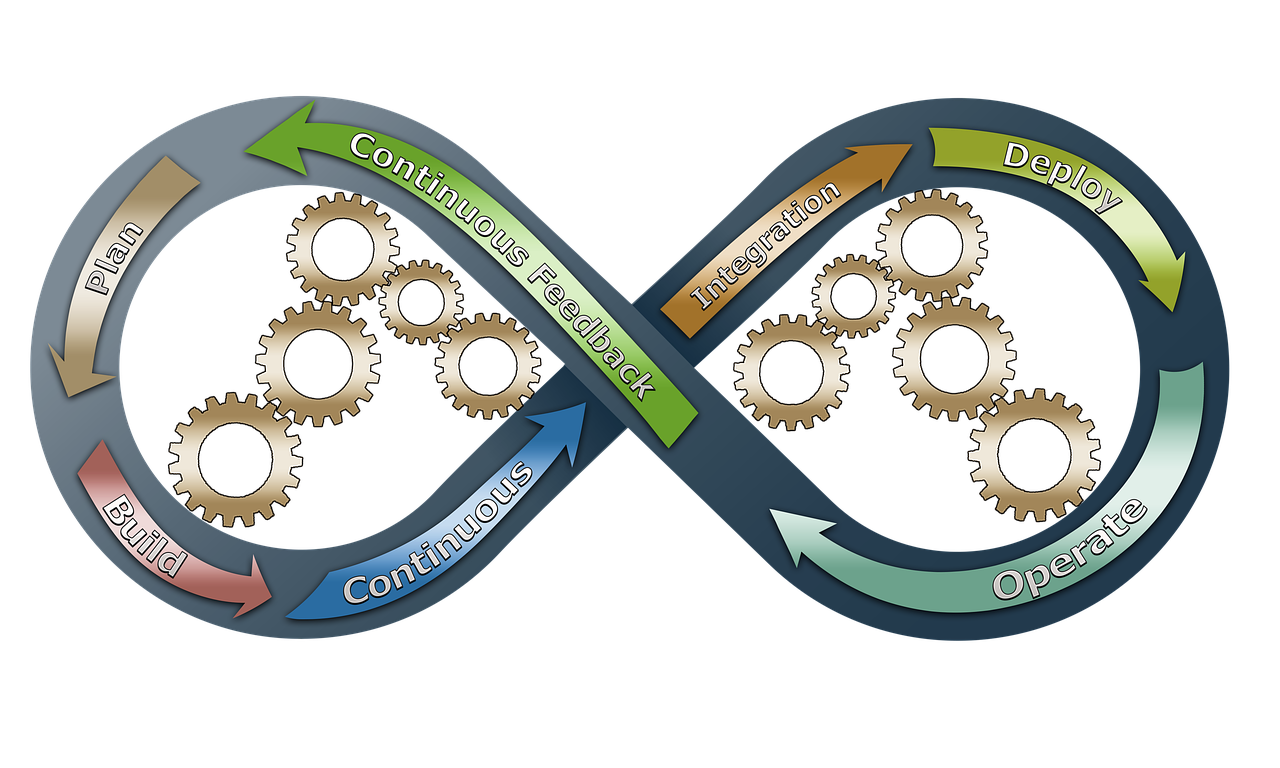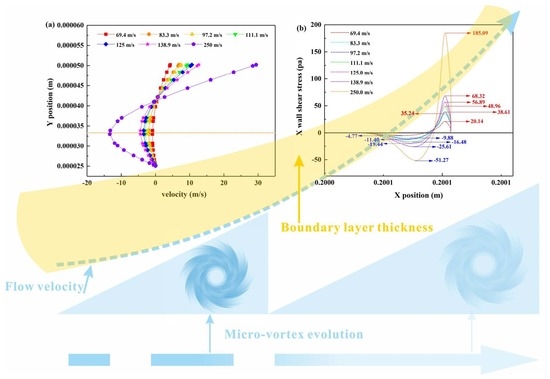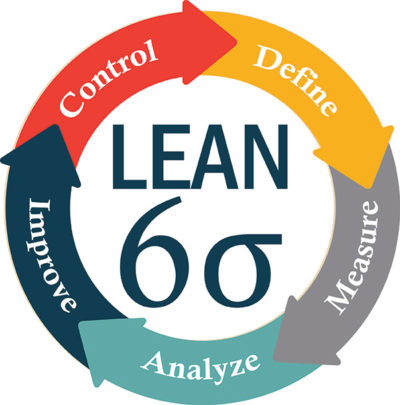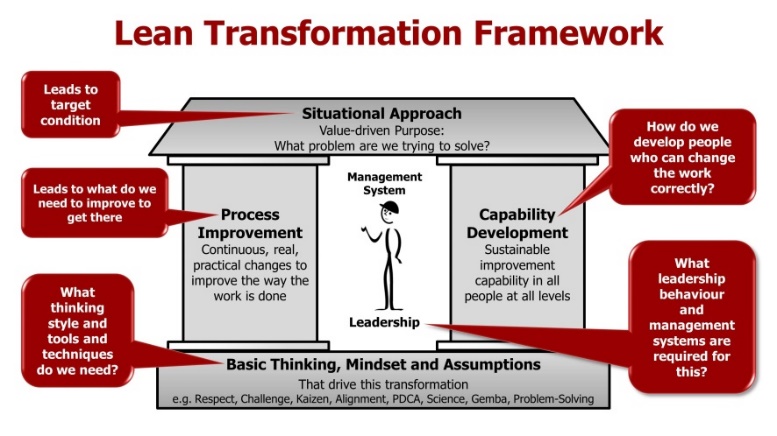Introduction
Continuous improvement and Lean Six Sigma are two powerful methodologies that have revolutionized the world of business and quality management. They share the common goal of enhancing processes, reducing waste, and ultimately delivering greater value to customers. In this article, we’ll delve into these methodologies, explore their principles, and understand how they contribute to operational excellence.
Continuous improvement and Lean Six Sigma are two powerful methodologies that have revolutionized the world of business and quality management. They share the common goal of enhancing processes, reducing waste, and ultimately delivering greater value to customers. In this article, we’ll delve into these methodologies, explore their principles, and understand how they contribute to operational excellence.
Continuous improvement is a philosophy that encourages organizations to constantly seek ways to enhance their processes and products. It involves a mindset of ongoing learning, adaptation, and refinement.
Lean Six Sigma, on the other hand, is a structured approach that combines Lean principles, which focus on eliminating waste, with Six Sigma methodologies, which aim to reduce variation and defects. Together, they create a powerful framework for process improvement.
Both continuous improvement and Lean Six Sigma prioritize customer satisfaction and strive for efficiency. By identifying and addressing areas of inefficiency and inconsistency, organizations can deliver higher-quality products and services while minimizing costs.
These methodologies provide tools and techniques that empower teams to analyze data, identify root causes of problems, and implement solutions. They also emphasize the importance of measuring performance to ensure sustained improvement.
In today’s competitive business landscape, embracing continuous improvement and Lean Six Sigma is often essential for staying ahead. These methodologies not only drive operational excellence but also foster a culture of innovation and customer-centricity, which are key to long-term success. So, whether you’re a seasoned quality professional or just beginning your journey in process improvement, understanding and applying these methodologies can lead to significant improvements in your organization’s performance.
Don’t stop here; you can continue your exploration by following this link for more details: What is Operational Excellence? – IBM Blog
Continuous improvement, often referred to as Kaizen, is a philosophy deeply rooted in Japanese manufacturing and management practices. At its core, it’s the idea that even well-performing processes can be improved incrementally over time. The focus is on identifying inefficiencies, eliminating waste, and fostering a culture of ongoing enhancement.
Kaizen is not a one-time initiative; it’s a mindset that encourages employees at all levels to actively participate in the improvement process. This philosophy empowers everyone within an organization to contribute their insights and ideas, fostering a sense of ownership and collective responsibility for driving positive change. The key principles of Kaizen include:
Continuous Improvement: The core principle revolves around the belief that small, gradual improvements, when consistently applied, lead to significant advancements over time.
Employee Involvement: Kaizen encourages employees to be proactive in identifying problems and suggesting solutions. It values the knowledge and experience of those closest to the processes.
Elimination of Waste: Waste is considered any activity or resource that does not add value to the final product or service. Kaizen aims to reduce or eliminate waste in all its forms, including time, materials, and energy.
Standardization: Establishing and adhering to standardized processes is critical for sustained improvement. It ensures that the gains made through Kaizen activities are maintained.
PDCA Cycle: The Plan-Do-Check-Act (PDCA) cycle is a systematic approach to problem-solving and continuous improvement. It involves planning a change, implementing it, evaluating the results, and then acting on those results to further improve.
Gemba: In Kaizen, the concept of “Gemba” refers to the actual place where work is done. It emphasizes the importance of going to the source of a problem, observing it firsthand, and making improvements on-site.
By embracing Kaizen principles, organizations can create a culture of continuous learning and adaptation, which is essential for staying competitive and responsive to changing customer needs and market dynamics.
To delve further into this matter, we encourage you to check out the additional resources provided here: Lean Six Sigma on LinkedIn: Kaizen Tools: 5 Tools You Must Know …

Continuous improvement places customers at the center. It aims to meet and exceed customer expectations by consistently delivering better products and services.
Continuous improvement is a customer-centric philosophy that prioritizes meeting and surpassing customer expectations. By consistently enhancing products and services, businesses can not only satisfy their customers but also build lasting relationships and loyalty. This approach recognizes that customer needs evolve, and to stay competitive, organizations must adapt and innovate accordingly.
If you’d like to dive deeper into this subject, there’s more to discover on this page: What is Operational Excellence? – IBM Blog

Employees are encouraged to actively participate in the improvement process. They are closest to the processes and can provide valuable insights.
Continuous improvement is not just a goal but a philosophy that permeates the culture of organizations committed to excellence. At its core, it’s about embracing change, innovation, and optimization as ongoing practices rather than one-time efforts. Continuous improvement methodologies, such as Lean Six Sigma, have become integral to achieving this dynamic state of improvement.
Lean Six Sigma is a powerful approach that combines two distinct but complementary methodologies: Lean, which focuses on reducing waste and increasing efficiency, and Six Sigma, which emphasizes minimizing defects and variations in processes. Together, they form a comprehensive framework for process improvement that has delivered impressive results for countless organizations across various industries.
One of the key principles of Lean Six Sigma is the DMAIC framework, which stands for Define, Measure, Analyze, Improve, and Control. This structured approach guides organizations through the process of identifying issues, collecting data, analyzing root causes, implementing solutions, and maintaining control to ensure sustained improvements.
The benefits of adopting Lean Six Sigma are manifold. It leads to enhanced quality, reduced costs, increased customer satisfaction, and improved overall efficiency. Moreover, it fosters a culture of continuous learning and adaptation, which is essential in today’s rapidly changing business landscape.
A hallmark of Lean Six Sigma is its reliance on data and evidence-based decision-making. This ensures that improvements are not based on hunches or assumptions but on concrete facts and measurements. It’s a methodology that thrives on transparency and accountability, enabling organizations to pinpoint areas in need of enhancement and track progress meticulously.
Employees are encouraged to actively participate in the improvement process. They are closest to the processes and can provide valuable insights. By involving employees at all levels, organizations tap into a wealth of knowledge and experience that can lead to innovative solutions and sustainable improvements.
Furthermore, Lean Six Sigma promotes a customer-centric approach. It recognizes that the ultimate measure of success is customer satisfaction. By aligning processes with customer needs and expectations, organizations can deliver products and services that truly resonate with their target audience.
In summary, Lean Six Sigma is not a one-size-fits-all solution but a flexible and adaptable framework that can be tailored to suit the specific needs and challenges of any organization. It’s a journey towards operational excellence and continuous improvement, and those who embark on it often find themselves on a path to sustainable success.
Additionally, you can find further information on this topic by visiting this page: Operational Excellence for COOs: Streamlining Processes for …

Decisions are based on data and facts rather than assumptions. Data analysis is critical for identifying areas that need improvement.
Data-Driven Decisions
Additionally, you can find further information on this topic by visiting this page: Achieving operational excellence: What’s Lean Six Sigma?

Instead of radical overhauls, continuous improvement focuses on making small, manageable changes. This minimizes disruption while steadily enhancing performance.
Continuous improvement, often associated with methodologies like Lean and Six Sigma, encourages a culture of incremental progress. It recognizes that significant, sustainable change often arises from the accumulation of numerous small improvements over time. This approach empowers employees at all levels to contribute their ideas and efforts toward making the organization more efficient, effective, and customer-focused. By prioritizing continuous improvement, businesses can adapt to changing circumstances, stay competitive, and drive long-term success.
To expand your knowledge on this subject, make sure to read on at this location: Unleashing Operational Excellence in the Supply Chain | PMI Fort …

Lean Six Sigma combines Lean principles, which emphasize waste reduction, with Six Sigma, which focuses on process quality and variation reduction. The result is a structured and data-driven approach to process improvement that has been widely adopted across industries.
“Lean Six Sigma, a powerful methodology, harnesses the synergy of Lean’s waste reduction and Six Sigma’s quality focus. It’s the blueprint for process excellence, embraced by diverse industries.”
Looking for more insights? You’ll find them right here in our extended coverage: Achieving operational excellence: What’s Lean Six Sigma?

Lean Six Sigma projects follow the DMAIC framework. This structured approach ensures that problems are defined clearly, data is collected and analyzed, improvements are made, and control measures are put in place to sustain improvements.
The DMAIC framework provides a systematic roadmap for Lean Six Sigma projects, ensuring that organizations can:
Define the problem precisely, including its scope and impact on business goals.
Measure current processes and collect relevant data to understand the root causes of the problem.
Analyze data to identify key factors influencing the problem and prioritize areas for improvement.
Implement improvements and innovative solutions to address identified issues, optimizing processes for efficiency and quality.
Control the newly improved processes by implementing monitoring and feedback mechanisms, ensuring that performance remains consistent and sustainable over time.
By adhering to this structured approach, Lean Six Sigma projects can consistently achieve positive results and drive continuous improvement across various industries and processes.
For a comprehensive look at this subject, we invite you to read more on this dedicated page: Driving Process Excellence: Unleashing the Power of DMAIC for …

Six Sigma emphasizes reducing process variation to improve quality. This is achieved by identifying root causes of defects and implementing measures to eliminate them.
Six Sigma, with its emphasis on reducing process variation, has become a cornerstone of quality management in various industries. This methodology operates on the principle that minimizing variation leads to improved quality and consistency in products and services. Here’s an extension of the idea:
Six Sigma is like a precision instrument for quality improvement. It recognizes that variations in processes are often the culprits behind defects and customer dissatisfaction. By meticulously analyzing data and processes, Six Sigma practitioners can pinpoint the root causes of these variations and take precise actions to eliminate them.
One of the fundamental concepts in Six Sigma is DMAIC: Define, Measure, Analyze, Improve, and Control. This structured approach guides organizations through a systematic journey of process improvement. Let’s break down how this works:
Define: The first step is to clearly define the problem or the process that needs improvement. This sets the project’s boundaries and objectives.
Measure: Accurate measurement is essential in Six Sigma. Teams collect data to understand the current state of the process, quantifying the extent of the problem and its impact on quality.
Analyze: With data in hand, teams analyze it to identify the root causes of defects or process variations. Various tools and statistical methods are used to gain insights into what’s going wrong.
Improve: Once the causes are identified, the focus shifts to implementing improvements. Teams brainstorm solutions, test them, and then roll out changes that promise to eliminate defects and reduce variation.
Control: Finally, the improvements are not just implemented but also maintained. Controls and monitoring mechanisms are established to ensure that the process stays on track and continues to produce high-quality outcomes.
The heart of Six Sigma is the pursuit of continuous improvement. It’s not a one-time fix but an ongoing journey. Organizations that adopt Six Sigma as a core philosophy commit to a culture of data-driven decision-making and relentless pursuit of excellence.
By adhering to the principles of Six Sigma, businesses can achieve several benefits. These include higher customer satisfaction, reduced costs, increased efficiency, and a competitive edge in the market. Moreover, the systematic approach of Six Sigma ensures that improvements are sustained over time, leading to lasting positive changes in processes and outcomes.
For a comprehensive look at this subject, we invite you to read more on this dedicated page: Six Sigma Definition – What is Lean Six Sigma? | ASQ

Lean principles identify eight types of waste, including overproduction, waiting, and defects. Lean Six Sigma projects aim to reduce or eliminate these types of waste to improve efficiency.
Lean Six Sigma projects employ various methodologies and tools to target and reduce the eight types of waste identified by lean principles. These types of waste, often referred to as “DOWNTIME,” include:
Defects: This type of waste arises when products or services do not meet customer expectations or specifications, leading to rework, corrections, or customer dissatisfaction. Lean Six Sigma projects focus on root cause analysis and process improvements to reduce defects and improve quality.
Overproduction: Overproducing goods or services beyond what the customer demands ties up resources, creates excess inventory, and can lead to increased storage costs. Lean Six Sigma emphasizes demand-driven production to reduce overproduction and align production with actual customer needs.
Waiting: Waiting occurs when people, materials, or information are idle due to inefficient processes or resource allocation. Lean Six Sigma projects seek to eliminate or minimize wait times by optimizing workflows, reducing bottlenecks, and improving resource allocation.
Non-Utilized Talent: Failing to engage and utilize the skills, knowledge, and creativity of employees is a waste of human resources. Lean Six Sigma encourages employee involvement and empowerment, allowing teams to tap into their full potential.
Transportation: Excessive movement or transportation of materials or information between processes or locations can lead to delays, damage, or added costs. Lean Six Sigma projects aim to streamline transportation processes, minimizing unnecessary movements and handling.
Inventory: Excess inventory ties up capital, occupies storage space, and can lead to waste through obsolescence or damage. Lean Six Sigma focuses on reducing inventory levels while maintaining smooth production and delivery processes.
Motion: Unnecessary movement or motion by employees or equipment can lead to inefficiency and increased risk of accidents or errors. Lean Six Sigma projects aim to optimize workspaces and layouts to minimize unnecessary motion.
Extra Processing: This waste occurs when additional steps or processes are performed that do not add value to the final product or service. Lean Six Sigma projects scrutinize processes to eliminate unnecessary steps and streamline workflows.
By identifying and addressing these types of waste, Lean Six Sigma helps organizations streamline their processes, reduce costs, enhance quality, and deliver greater value to customers. It’s a powerful approach for achieving operational excellence and improving overall efficiency.
To expand your knowledge on this subject, make sure to read on at this location: Lean six sigma in the healthcare sector: A systematic literature …

Lean Six Sigma projects often involve cross-functional teams with members from different departments. This collaborative approach ensures a holistic view of the process.
In Lean Six Sigma projects, cross-functional teams play a pivotal role in achieving success. These teams bring together individuals from various departments, each with their unique perspectives and expertise. This diversity in knowledge and experience allows for a comprehensive and holistic view of the process under improvement. By working collaboratively, team members can identify root causes, propose effective solutions, and implement changes that have a far-reaching impact on the organization. This collaborative approach not only improves processes but also fosters a culture of continuous improvement across the entire organization.
You can also read more about this here: Operational Excellence Principal at Citizens

While continuous improvement and Lean Six Sigma are distinct methodologies, they complement each other exceptionally well. Continuous improvement fosters a culture of ongoing enhancement, making it an ideal foundation for Lean Six Sigma projects. Lean Six Sigma, on the other hand, provides the structured tools and methodologies needed to tackle complex process issues systematically.
Together, they create a synergy that drives operational excellence:
Data-Driven Decision-Making: Lean Six Sigma relies heavily on data and statistical analysis to identify root causes and solutions. This data-driven approach aligns perfectly with the principles of continuous improvement, where decisions are based on concrete evidence rather than assumptions.
Efficiency and Waste Reduction: Lean principles are all about eliminating waste, whether it’s in the form of excess inventory, overproduction, or unnecessary steps in a process. Continuous improvement seeks to optimize operations continually, making Lean Six Sigma an excellent tool for achieving these efficiency gains.
Customer Focus: Both Lean and Six Sigma methodologies emphasize understanding and meeting customer needs. Continuous improvement keeps the customer at the forefront of all process enhancements. By incorporating Lean Six Sigma, organizations can ensure that these improvements are achieved in a data-driven, systematic manner.
Employee Engagement: Lean Six Sigma encourages employees to be active participants in process improvement. Continuous improvement initiatives often rely on input from employees who are closest to the work. Combining the two approaches ensures that employees not only identify areas for improvement but also have the tools to drive meaningful change.
Sustainability: Continuous improvement is about creating a culture of ongoing growth, and Lean Six Sigma can help sustain these improvements over the long term. By establishing control mechanisms and monitoring processes, organizations can ensure that gains achieved through Lean Six Sigma projects become a lasting part of their operations.
Problem Solving: Both methodologies are problem-solving approaches at their core. Continuous improvement seeks to identify and solve problems as they arise, while Lean Six Sigma provides a structured problem-solving framework. Together, they offer a comprehensive approach to addressing challenges within an organization.
Cultural Transformation: Implementing Lean Six Sigma can be a catalyst for cultural change within an organization. It encourages a mindset of striving for perfection and continually seeking ways to enhance processes. Continuous improvement reinforces and perpetuates this culture of excellence.
Scalability: Whether an organization is large or small, the principles of continuous improvement and Lean Six Sigma can be applied. They are scalable and adaptable, making them valuable for businesses of all sizes and industries.
In conclusion, the synergy between continuous improvement and Lean Six Sigma creates a powerful force for organizations seeking to achieve operational excellence. Together, they foster a culture of ongoing enhancement, data-driven decision-making, and a relentless focus on customer satisfaction. By embracing both approaches, organizations can navigate the ever-changing business landscape with resilience and agility.
To delve further into this matter, we encourage you to check out the additional resources provided here: Enhancing Human Resource Processes through Lean Six Sigma: A …

Continuous improvement benefits from the data-driven approach of Lean Six Sigma. Data analysis helps identify which areas need improvement and provides insights into the root causes of problems.
Lean Six Sigma’s data-driven approach is the compass guiding organizations towards continual improvement. By thoroughly analyzing data, businesses can pinpoint areas that require enhancement and gain valuable insights into the root causes of issues, paving the way for more effective problem-solving and sustainable progress.
For a comprehensive look at this subject, we invite you to read more on this dedicated page: What is Operational Excellence? – IBM Blog

Lean Six Sigma’s DMAIC framework offers a structured way to define and solve problems. It guides teams through the process of identifying issues, collecting data, and implementing solutions.
The DMAIC framework, which stands for Define, Measure, Analyze, Improve, and Control, is a powerful tool within Lean Six Sigma. It provides a systematic and data-driven approach to problem-solving and process improvement.
Define: This phase involves clarifying the problem, setting goals, and outlining the scope of the project. It’s about understanding what needs improvement and defining success criteria.
Measure: In this step, teams gather data related to the process or problem. This data provides a baseline for understanding the current state, identifying trends, and quantifying the issue’s impact.
Analyze: With data in hand, the team analyzes it to identify root causes of the problem. This phase requires critical thinking and often involves tools like cause-and-effect diagrams or statistical analysis to pinpoint underlying issues.
Improve: Once the root causes are identified, teams work to generate potential solutions. These solutions are then tested and implemented in a controlled manner to ensure they address the problem effectively.
Control: The final phase involves putting measures in place to sustain the improvements achieved. This includes setting up monitoring systems, creating standard operating procedures, and ensuring that the process remains on track.
By following the DMAIC framework, organizations can approach problem-solving and process improvement in a structured and efficient manner, leading to tangible and sustainable results.
For additional details, consider exploring the related content available here Key Principles of Operational Excellence | Smartsheet

Lean Six Sigma’s focus on control measures ensures that improvements are sustained over time. This prevents processes from reverting to their previous state.
“By integrating control measures, Lean Six Sigma not only drives improvements but also sustains them, ensuring lasting efficiency gains and preventing regression to previous process states.”
Additionally, you can find further information on this topic by visiting this page: Lean Six Sigma Green Belt vs Black Belt: Roles and Responsibilities

Both methodologies prioritize delivering value to customers. Combining them results in processes that are not only efficient but also produce higher-quality products and services.
The synergy of Lean Six Sigma, combining the efficiency-focused Lean principles with the data-driven Six Sigma approach, brings about several key benefits:
Enhanced Customer Satisfaction: By focusing on eliminating waste (Lean) and reducing defects (Six Sigma), organizations can provide products and services that meet or exceed customer expectations. This translates to higher customer satisfaction and loyalty.
Cost Reduction: Lean principles aim at minimizing unnecessary steps and resources in processes, leading to cost savings. When coupled with Six Sigma’s defect reduction strategies, it results in more efficient operations and reduced expenses.
Improved Quality: Six Sigma’s emphasis on statistical analysis and process control, when integrated with Lean’s waste reduction efforts, leads to higher product and service quality. Fewer defects mean fewer customer complaints and rework, ultimately saving time and resources.
Faster Delivery: Lean principles help streamline processes, reducing lead times. When combined with Six Sigma’s focus on reducing process variation, organizations can deliver products and services more quickly and predictably.
Employee Engagement: Both methodologies encourage involving employees in process improvement efforts. Engaged employees often have a better understanding of processes and can contribute valuable insights, leading to more effective problem-solving.
Sustainability: Lean Six Sigma’s dual focus on efficiency and quality can lead to more sustainable practices. By reducing waste and optimizing processes, organizations can minimize their environmental footprint.
Competitive Advantage: Organizations that successfully implement Lean Six Sigma can gain a significant competitive edge. They are better equipped to adapt to changing customer needs and market conditions while consistently delivering high-quality products and services.
In summary, Lean Six Sigma’s integration creates a powerful framework that combines the strengths of both methodologies. It not only helps organizations reduce costs and defects but also ensures they remain customer-centric and agile in today’s competitive landscape.
Explore this link for a more extensive examination of the topic: Achieving operational excellence: What’s Lean Six Sigma?

Conclusion
In conclusion, continuous improvement and Lean Six Sigma are powerful methodologies that, when used together, drive operational excellence, reduce costs, and enhance customer satisfaction. By fostering a culture of ongoing enhancement and applying structured problem-solving techniques, organizations can achieve remarkable improvements in their processes and outcomes.
In conclusion, the synergy between continuous improvement and Lean Six Sigma creates a dynamic framework for organizational success. These methodologies, when used together, offer a comprehensive approach to process optimization and quality management. Here’s an extended view of their combined impact:
Continuous improvement and Lean Six Sigma, when harnessed in unison, create a culture of excellence that permeates every aspect of an organization. This culture is built on a foundation of data-driven decision-making, a commitment to eliminating waste, and a relentless pursuit of perfection.
One of the core strengths of Lean Six Sigma is its structured problem-solving approach, DMAIC (Define, Measure, Analyze, Improve, and Control), which dovetails perfectly with the principles of continuous improvement. This structured approach ensures that improvements are not just quick fixes but well-thought-out, lasting solutions.
Lean principles focus on eliminating waste in all its forms, be it overproduction, excess inventory, or unnecessary steps in a process. By streamlining operations, organizations can reduce costs, enhance efficiency, and ultimately deliver greater value to customers.
Continuous improvement, on the other hand, provides the mindset and framework for ongoing enhancement. It encourages every member of the organization to seek better ways of doing things and to challenge the status quo. In this environment, innovation thrives, and the organization becomes agile and adaptable in the face of change.
The benefits of this partnership are far-reaching. Operational excellence becomes the norm, leading to improved product and service quality. Customer satisfaction soars as defects decrease, and processes become more reliable. Costs are optimized as waste is systematically eliminated. Employee engagement increases as team members take ownership of improvements.
Moreover, the impact extends beyond the organization itself. Suppliers and partners also benefit from the efficiency and reliability of Lean Six Sigma practices, creating a ripple effect of excellence throughout the supply chain.
In a world where change is constant and competition is fierce, the combination of continuous improvement and Lean Six Sigma is a strategic advantage. It not only ensures an organization’s survival but positions it for sustainable growth and leadership in its industry.
To harness the full potential of these methodologies, organizations must commit to training and developing their teams in Lean Six Sigma principles and fostering a culture of continuous improvement. When these principles are ingrained in the DNA of an organization, the pursuit of excellence becomes second nature, and the journey toward operational perfection continues indefinitely.
To delve further into this matter, we encourage you to check out the additional resources provided here: What is Operational Excellence?
More links
If you’d like to dive deeper into this subject, there’s more to discover on this page: The Purpose of Green Belt in Six Sigma: Driving Operational …
